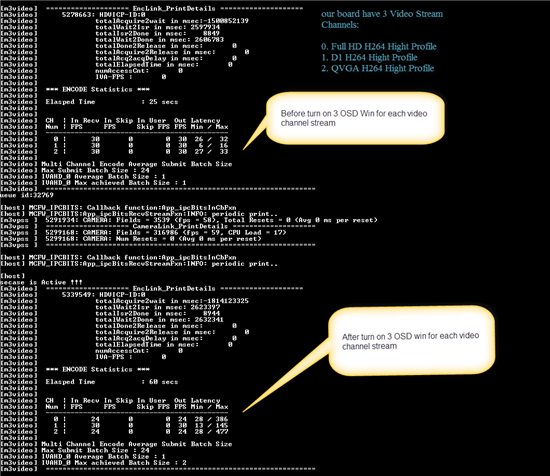I am working with dm8147 TI CPU and dvsdk 3.5. We modified the full feature use-case to support 3 channel: 1. Full HD H264 high profile, 2. D1 H264 High profile, 3. QVGA H264 High Profile. The system work ok without OSD. Whenever We turn on the OSD (3 OSD wins for 1channel) the frame rate look like down. You can check out the log in below image.
Beside of that the OSD in channel 3 was blinked. for me, I think this problem came from syncronization in OSD imprinting at M3 VPSS, but actually I have no clear solution for it. Please give me a hand some instructions.
Thank you very much !


